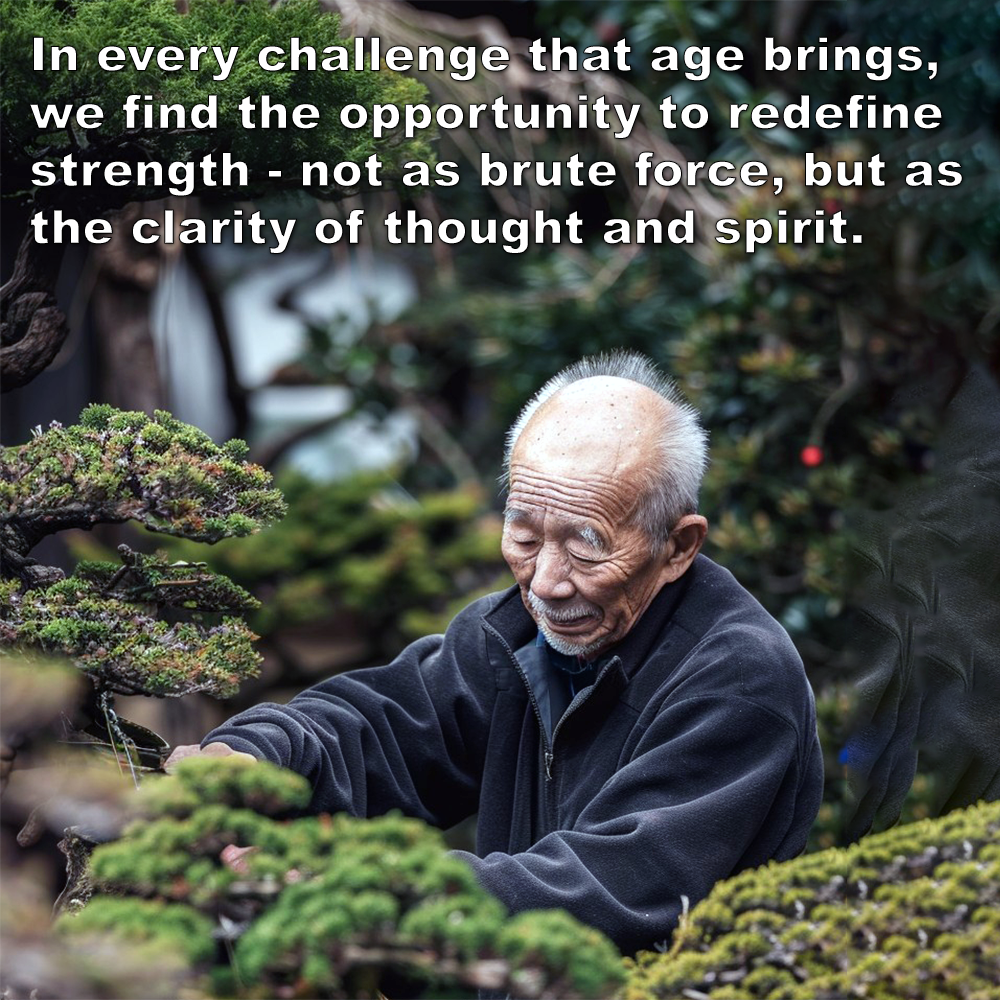
In every challenge that age brings, we find the opportunity to redefine strength – not as brute force, but as the clarity of thought and spirit.
Posted by ADAM CARTER on OCT 06, 2024

In every challenge that age brings, we find the opportunity to redefine strength – not as brute force, but as the clarity of thought and spirit.
(Approx 2 minute 25 second read)
Recently, I had a conversation with one of my senior students. Both of us are in our sixties now, reflecting on what happens when time begins to slow us down. As martial artists, we know that no amount of training can stop the effects of aging. We’ve gained wisdom and experience, but we also face a physical decline that cannot be ignored.
Even the most experienced martial artist may struggle against a younger, faster, and stronger attacker. At twenty, speed and power come naturally. By sixty, we must accept that our bodies don’t recover as quickly, and injuries are more common. While aging doesn’t strip us of skill, it forces us to adapt and acknowledge our limitations. As our strength fades, so too must our reliance on physical confrontation.
Verbal de-escalation and avoidance become a priority in any self-defense situation, but they take on even greater significance as we age. When we were younger, I had no problem proving my physical abilities if I needed to. But now, I want to avoid conflict altogether. And rather than relying on techniques that demand speed and power, we can focus on using our voice and presence to defuse situations before they escalate out of control.
In our younger days, the idea of “efficiency over force” applied to combat, but as we face the realities of aging, we apply this principle to life itself. Is it truly efficient to engage in a physical struggle with someone forty years or more younger than us, who is faster, and stronger? The answer is clear – our greatest tool now is wisdom.
Some kind of verbal defense is much safer than trying to defuse conflict with strikes. A well-chosen word, a calm and confident demeanor, can be more powerful than a physical technique. Experience has taught us that the best defense is not to fight at all.
We don’t need to prove our strength anymore – we need to prove our wisdom.
Recently, someone commented that some martial artists never stop training, they never quit, continuing well into old age. Many of course do practice well into old age, my instructor being one of those many.
However, realistically, while the sentiment is admirable, the reality is that everyone eventually stops. Whether it’s due to physical limitations or the wear of time, there comes a point when the body can no longer endure the physical demands of martial arts training. But this doesn’t mean we stop being martial artists.
Even when we stop training physically, the lessons of karate live on. Self-discipline, perseverance, and awareness continue to shape how we approach life. In many ways, our deepest training begins when the physical practice fades. Karate becomes more – it transforms into a way of thinking, moving through life with purpose and confidence. It’s about surviving the challenges of aging with the same spirit we bring to practicing, and for some of us, teaching in the dojo.
Experience teaches us that there’s humility in accepting that we may not be able to win a physical fight against someone with the advantages of youth. This humility doesn’t diminish us.
Aging challenges us in ways we never anticipated when we first donned our karate-gi. But it also offers new opportunities to deepen our practice. I still practice and train, several times a day, everyday, and teach too. Do I want to get into a physical fight? Hell no.
Written by Adam Carter – Shuri Dojo.
![]() Photo Credit: Stockcake
Photo Credit: Stockcake
